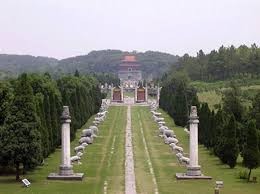The Beijing Institute of Cultural Heritage unearthed a massive tomb complex under a suburban community in Beijing that housed 129 tombs estimated to date back to about a millennium.
The cultural institute revealed their rare discovery Sunday and explained that the cultural relics housed 129 tombs built between periods where the East Han Dynasty in 25-220 and the Tang Dynasty in 618-907 had ruled the land.
Archeologists with the institute also believe that the complex also contains tombs from the Liao Dynasty in 907-1125 and deemed the discovery a valuable addition to China's cultural heritage due to its size, location and time span.
Experts who scoured the massive complex discovered picturesque murals of people and furniture during the ancient eras and some artifacts like lacquerware, pottery, porcelain and other things used when conducting funerals during the ancient times.
The tomb complex was inadvertently dug up by a construction company which was supposed to build a residential complex on top of the relics.
According to reports, the construction firm exhumed the cultural relics while they were complying with a mandate imposed in 2014 by the municipal cultural relics protection that every plot of land must be screened first before development is begun.
Other popular underground tombs in China include the famed Mausoleum of the First Qin Emperor, which is located in the Lintong District of Xi'an in China's northwestern province of Shaanxi.
This tomb is where China's first emperor, Qin Shi Huang, lay in his eternal rest after he died on Sept. 10, 210 B.C. following his feat in conquering six nations under war, giving birth to what is now known as the unified nation of China.
According to reports, this tomb holds not only the emperor's body, but also a wide array of secrets that can answer many of the Chinese society's mysteries, though the tomb itself is yet to be unearthed.



























